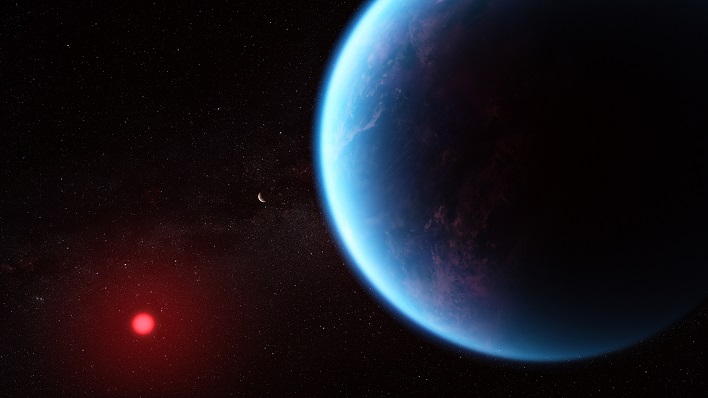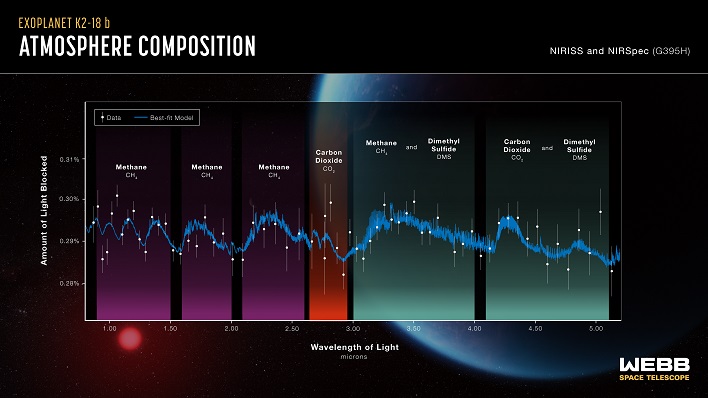Webb Telescope Discovers Possible Signs Of Life On An Exoplanet 8.6X Bigger Than Earth

The question of whether we are alone in the universe has been a question asked by humans since the beginning of time. This question is one of the main reasons the James Webb Space Telescope (JWST) was created to try and answer. Now, new research using data from Webb suggests that exoplanet K2-18 b could very well possess the building blocks for life as we know it.
The Hubble Space Telescope was the first observatory to garner more profound insights into K2-18 b's atmosphere, which led scientists to study it further and changed the understanding of the system. The exoplanet orbits a dwarf 120 light-years from Earth, and lies in what is known as the "habitable zone." This makes it a very intriguing candidate for astronomers and scientists seeking other planets that could possess the necessary elements to support life.
"Our findings underscore the importance of considering diverse habitable environments in the search for life elsewhere," explained Nikku Madhusudhan, an astronomer at the University of Cambridge and lead author of the paper announcing the results. "Traditionally, the search for life on exoplanets has focused primarily on smaller rocky planets, but the larger Hycean worlds are significantly more conducive to atmospheric observations."
Because K2-l8 b has an abundance of methane and carbon dioxide and a shortage of ammonia, the researchers believe there is a good likelihood that a water ocean lies beneath the hydrogen-rich atmosphere. The research also detected a molecule called dimethyl sulfide (DMS), which is only produced by life on Earth.
"Although this kind of planet does not exist in our solar system, sub-Neptunes are the most common type of planet known so far in the galaxy," remarked Subhajil Sarkar of Cardiff University. "We have obtained the most detailed spectrum of a habitable-zone sub-Neptune to date, and this allowed us to work out the molecules that exist in the atmosphere."
The team achieved their findings by analyzing data from K2-18 b's parent star as it passed through the exoplanet's atmosphere. This is also how the exoplanet was first discovered in 2015 with NASA's K2 mission, which detected a drop in brightness as K2-18 b passed in front of its host star. As starlight passes through the exoplanet's atmosphere, it leaves traces of evidence that scientists and astronomers can observe to determine the gases of the K2-18 b's atmosphere.
The team recognizes these results are only possible because of Webb's extended wavelength range and unprecedented sensitivity. Madhusudhan explained, "For comparison, one transit observation with Webb provided comparable precision to eight observations with Hubble conducted over a few years and in a relatively narrow wavelength range."
The work is far from done, however. The team intends to do follow-up research with Webb's MIRI spectrograph, which they hope will further validate their recent findings. Madhusudhan added that the team's goal is to identify life on a habitable exoplanet, which he says "would transform our understanding of our place in the universe."


